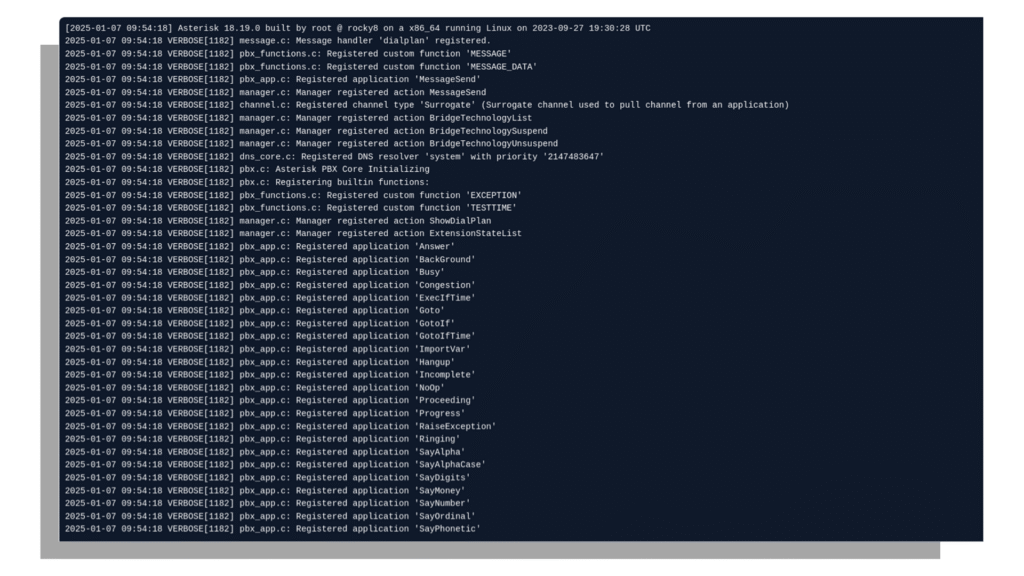
Have you ever wondered why some contact centers never drop calls, scale effortlessly, and feel like they read your mind? The secret often lies in Asterisk development—and KingAsterisk Technology is the US-based partner that builds those telephony systems with precision.
In this blog, I’ll walk you through what Asterisk Software Development really means in 2025, why it matters (especially in cities like New York, Dallas, Seattle, and Boston), how KingAsterisk stands out, and what you should ask before hiring a provider.
Stick around — you’ll walk away with clarity and maybe even some ideas for your own contact center upgrade.
Why Asterisk Development Still Matters in 2025
What is Asterisk Development (and why should you care?). In short, Asterisk development means building, customizing, and maintaining communication systems (PBX, IVR, conferencing, contact centers) using the open-source Asterisk telephony engine.
- It gives you total control.
- It avoids perpetual vendor lock-in.
- You pay for features and scaling, not per-seat licensing.
Many organizations realize that customizing your communication layer gives you a competitive edge — and Asterisk is often at the center of that strategy.
Currently Trending: Browser-Based Mobile Dialer with WebRTC Support
Trends Driving Asterisk & Telephony in 2025
Asterisk development is the process of customizing and deploying telephony systems (like PBX, IVR, contact center) using the open-source Asterisk platform, giving full control over your communications infrastructure. Let me drop a few numbers and movements that are shaping this space — so you can see the winds behind the sails:

The global VoIP market is growing at ~10.2% CAGR and is expected to reach USD 140.74 billion by 2027. So, if you’re building or upgrading a contact center in Chicago, Atlanta, Los Angeles, or any US location, Asterisk development gives you that flexibility with performance — not just a boxed solution.
How KingAsterisk Technology Delivers Top-Notch Asterisk Development
Alright, now let’s get to the juicy part: what we at KingAsterisk do, how we do it, and why clients across the US love it.
Our Approach: From Vision to Deployment
We don’t sell “telephony boxes.” We build systems. Think of us as your telephony architects and coders, building for your business logic, your volume, your rules.
Here’s our process (simplified):
- Discovery & mapping — we sit with you (virtually or onsite) and map your contact flows, agent roles, escalation patterns, CRM logic, call routing, etc.
- Design & prototyping — we sketch call-flows, dashboard mocks, API connections, and agree on features.
- Core development (Asterisk customization) — we implement dialplan, AGI / FastAGI, modules, custom features, integrations.
- Testing & load simulation — we simulate peaks (e.g. Black Friday, seasonal surges) in a staging setup.
- Deployment & cutover — we roll to production with fallback paths, training, and careful monitoring.
- Support, maintenance & evolution — we monitor, tune, add new features, respond to changes, scale horizontally.
- We embed scalability, security, high availability, and flexibility into every build.
Core Services We Offer (All under our Asterisk Development banner)
- Custom contact center / call center solution development
- IVR and intelligent conversational voice systems
- Multi-tenant PBX / hosted PBX setups
- Migration from legacy PBX systems
- Maintenance, support, upgrades
We’re a US-based call center solution provider (serving cities like San Francisco, Denver, Miami, Detroit), but our engineers can deploy for clients coast to coast. Our location gives you confidence in compliance, responsiveness, and local knowledge of US telecom regulations.
Deep Dive: Key Aspects of Asterisk Development
To show you we know this inside-out, let me walk through a few technical and architectural areas we focus on. This also helps you understand what to ask a provider (or what to demand).
Dialplan Logic & Call Routing
We don’t use generic trees; we build dynamic, context-aware dialplans that can branch based on customer profiles, CRM data, geolocation, time of day, agent skills, etc. We embed fallback routing, overflow paths, conditional routing. our code transitions between IVR, queues, agents, voicemail, SMS, etc.
Conversational IVR & NLP Integration
Rather than rigid IVR menus, we enable conversational menus using voice recognition, NLP libraries, or third-party AI services. Your IVR can ask natural questions like, “How may I assist you today?” and route intelligently. You can integrate sentiment analysis, predictive routing, and AI insights (e.g., route angry customers to senior agents).
High Availability & Redundancy
We design active-active or active-passive clusters of Asterisk servers. We build failover mechanisms, database redundancies, and load balancing (using SIP proxies, HA proxies, etc.). In a US datacenter (say in Dallas or Northern Virginia), we can deploy hot backups to another region (e.g. Phoenix) to ensure uninterrupted uptime.
Scaling & Performance
We benchmark calls-per-second, concurrency limits, codec overhead, hardware capacity. We scale via clustering, sharding, distributed media servers, and stateless front ends. monitor resource metrics (latency, packet loss, jitter) proactively.
Integration & API
We write custom connectors (REST, Webhooks, gRPC) to interface with CRM, database, and analytics. For example: when an agent picks up the call, the CRM shows the customer profile; after call end, the call log auto-syncs. We build logic triggers (e.g. escalate calls, open tickets, send SMS, invoke chat bots).
Logging, Analytics & Dashboards
We capture call metadata, agent performance, queue stats, SLAs, dropped calls. Our dashboards (live and historical) so contact center ops in Houston, Charlotte, Phoenix can see anomalies. We can integrate with BI tools (Tableau, Looker, PowerBI).
Security, Encryption & Compliance
We enforce TLS / SRTP for voice encryption. We embed authentication, logging, rate limiting, session expiration, and anomaly detection. For sensitive verticals (e.g. HIPAA, PCI), we build additional controls like masked recording, consent flows, data partitioning.
Must Read: Live Demo Of Our Solution
Client Use Cases & Industry Examples
Let me paint you a few real (anonymized) scenarios — because stories stick.
Use Case A: Fintech Contact Center in Charlotte, NC
A mid-sized financial services company wanted a call center to handle inbound/outbound calls, integrate with their custom customer portal, log calls, and scale during monthly billing cycles.
We built a full Asterisk-based contact center: click-to-call integration in their web app, smart routing based on account type, and voice encryption to satisfy PCI compliance. During peak days, call concurrency doubled without a hitch.
Use Case B: Healthcare Telephony Hub in Boston, MA
A regional clinic needed HIPAA-compliant appointment systems, secure patient callback, and integration with its EMR (Electronic Medical Records). We built an Asterisk system with encrypted IVR, masked recordings, consent prompts, and logging. Agents see patient records before the call. We maintain strict audit trails.
Use Case C: SaaS Startup in Austin, TX
A software company launched a helpdesk + telephony module for their SaaS offering. They needed multi-tenant architecture, per-tenant isolation, and dynamic provisioning. We built a multi-tenant PBX design using Asterisk. When they onboard a new client, a new “instance” config spins up automatically. They avoided recurring vendor VoIP fees and controlled their margin.
FAQs
Q1: What is the cost range of Asterisk development for a contact center?
It varies a lot — small projects (10–20 users with basic IVR) may run in low tens of thousands USD; mid-level systems (hundreds of agents, integrations, HA) can go from $100K–$500K+ over time. Much depends on features, scale, compliance, integrations.
Q2: Can Asterisk handle video + voice calls?
Yes. You can integrate video conferencing modules (or WebRTC) alongside voice in Asterisk, though you need to plan media path, bandwidth, codecs, and UI carefully.
Q3: How difficult is migration from a legacy PBX to Asterisk?
It’s not trivial, but doable. You typically run both systems in parallel, port numbers gradually, map features, test routing, train staff, then cut over. A good dev partner should guide you and minimize downtime.
Q4: Do I need my own servers or can I go cloud?
You can choose either. Many deployments run on cloud VMs (AWS, Azure, GCP) in US regions. Others use on-prem or hybrid. What matters is design: you need redundancy, latency control, and reliable media paths.
Objection Handling & My Opinion
You might think: “Why reinvent when I can buy a hosted VoIP platform?” Fair point — but here’s my take: hosted platforms eventually stretch you. You’ll hit limits, pay extra for features, or compromise workflows. With Asterisk development, you build what you need. The initial investment can pay off threefold over time.
Another objection: “Asterisk is old tech.” That’s a myth. As of 2025, developers still choose Asterisk for its flexibility, community, and battle-tested reliability. We adapt it, extend it, and bring in modern AI, NLP, scaling, cloud, etc.
You might worry about maintainability. Yes — codebase discipline, modular architecture, documentation, test suites, and version control are crucial. We follow best practices so your system doesn’t become a fragile mess.
Summary
Asterisk development gives you control, flexibility, scalability, and independence. Telephony trends in 2025 (AI, security, integration, cloud) make this the perfect time to invest. KingAsterisk Technology brings deep US-based expertise, strong process, custom architecture, and support to every project. Whether you’re in New York, Seattle, Atlanta, Phoenix, or any US city, we can design your next-gen contact center telephony system.
Ready to start? Let’s chat. Drop us a line or schedule a free call. We’ll audit your current system and propose a tailored Asterisk roadmap (no strings). Let’s turn your telephony stack into a business asset, not a bottleneck.





